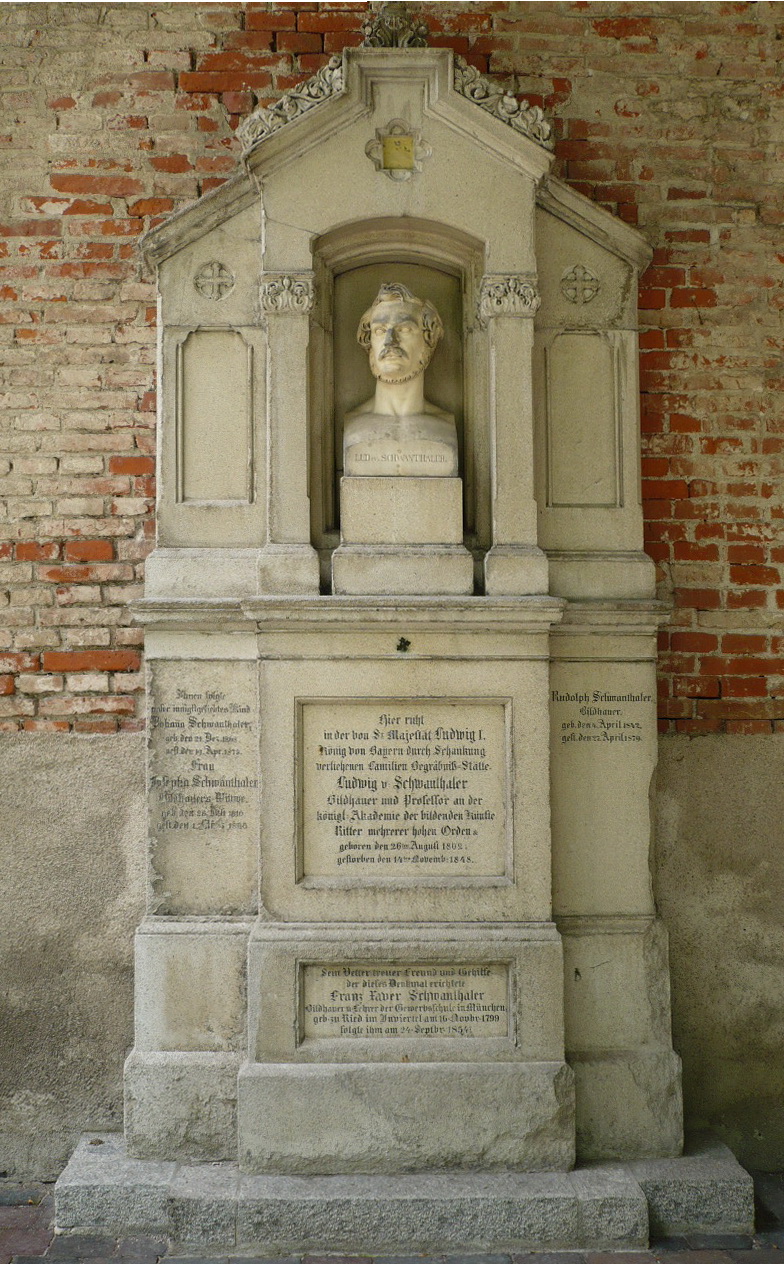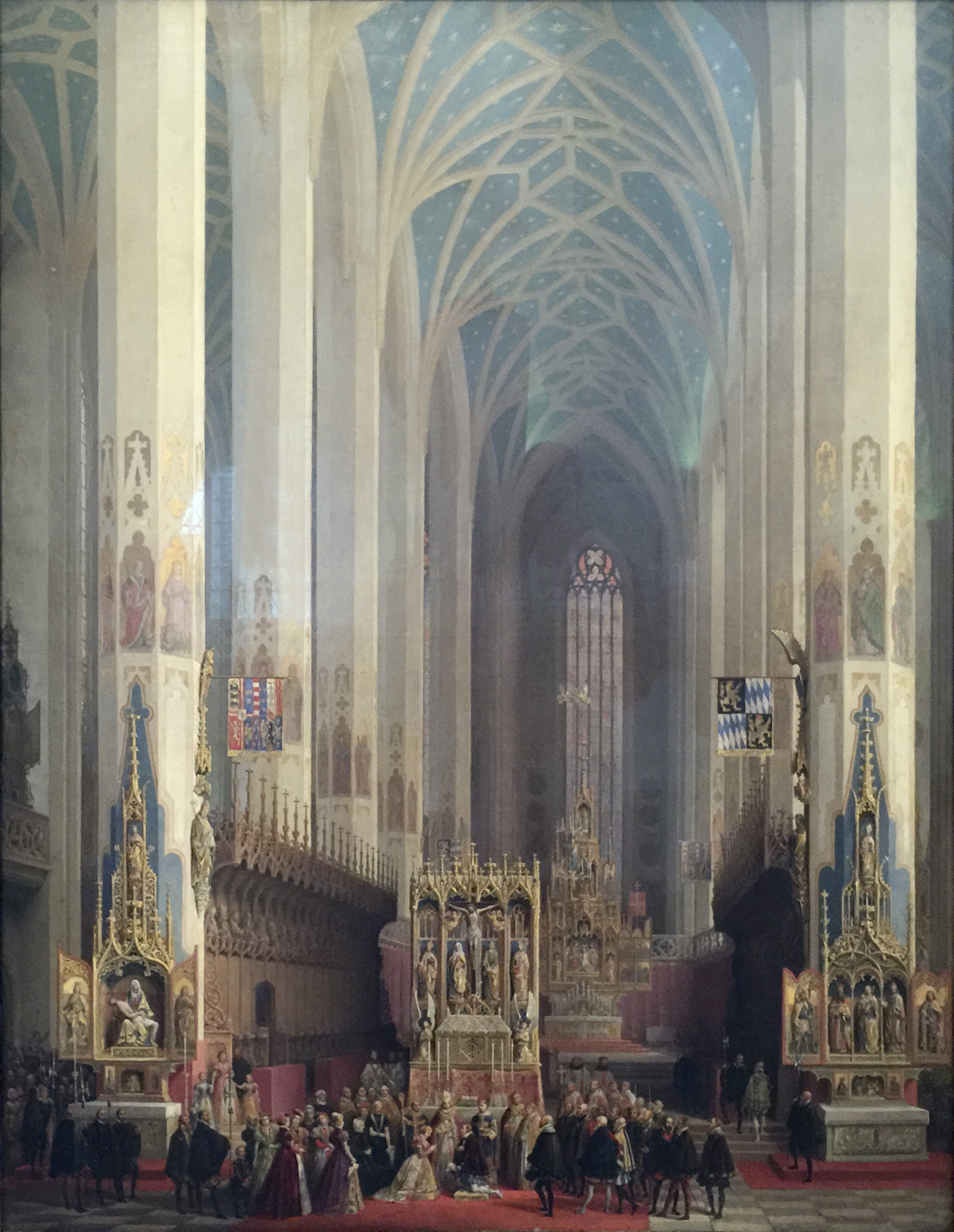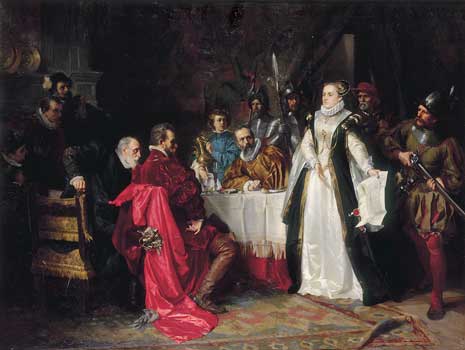|
Alexander Strähuber
__NOTOC__ Alexander Strähuber or (Straehuber); (1814–1882) was an Austrian-born German history painter and book illustrator. From 1865 to 1882 he was a professor at the Royal Academy of Fine Arts in Munich. Strähuber was born on 28 February 1814 at Mondsee in Upper Austria. He was son to Alexander Strähuber, a stable master to the Wrede barony of Bavaria.Holland, Hyacinth"Strähuber: Alexander"in ''Allgemeine Deutsche Biographie'', Band 36 (1893), P. 490–493. Retrieved 30 December 2020 At the age of seven he moved to Munich with his parents and attended grammar school. After showing a talent for drawing, he transferred to the Munich Polytechnic School ( Polytechnische Schule München), founded in 1828, where he received drawing lessons from Joseph Anton Rhomberg and Hermann Mitterer. In 1829 he enrolled at the Royal Academy of Fine Arts, becoming a student of the history and biblical subject painters Heinrich Hess and Clemens von Zimmermann, and the Nazarene J ... [...More Info...] [...Related Items...] OR: [Wikipedia] [Google] [Baidu] |
Mondsee (town)
__NOTOC__ Mondsee is a town in the Vöcklabruck district in the Austrian state of Upper Austria located on the shore of the lake Mondsee. The town is home to the medieval Mondsee Abbey, whose cloister church was used for the site of the wedding in ''The Sound of Music''. The town is also known for the SKGLB railway museum and for prehistoric pile-dwelling (or stilt house) settlements at Mondsee, which are part of UNESCO World Heritage Sites. One of its past sons is Alexander Strähuber (1814–1882), the history painter and book illustrator, and from 1865 to 1882 professor at the Munich Royal Academy of Fine Arts.Holland, Hyacinth"Strähuber: Alexander"in ''Allgemeine Deutsche Biographie'', Band 36 (1893), P. 490–493. Retrieved 30 December 2020 Population Neighbouring municipalities * Unterach am Attersee * Tiefgraben * Innerschwand * Sankt Lorenz Gallery File:Mondsee, das Schloss Mondsee Dm125213 foto11 2017-08-12 17.41.jpg, St Michael Basilica (former ... [...More Info...] [...Related Items...] OR: [Wikipedia] [Google] [Baidu] |
Johann Georg Hiltensperger
Johann Georg Hiltensperger (21 February 1806 - 13 June 1890) was a German history painter and a professor at the Royal Academy of Fine Arts. Biography Born in Haldenwang, Oberallgäu, he was trained in drawing by L. Weiß before studying under Johann Peter von Langer at the Royal Art Academy and under Peter von Cornelius at the Kunstakademie Düsseldorf. Returning to Munich in 1825, he there received commissions for frescoes and oil paintings from Ludwig I of Bavaria and Maximilian II Joseph of Bavaria. For example, between 1838 and 1865 he produced the ''Odyssey Cycle'' in festal hall of the Munich Residenz to designs by Ludwig Schwanthaler. He also became a member of Munich's Vereins für Christliche Kunst (Association for Christian Art) His first marriage was in Unterbruck to Anna Theresia von Paur (1806–1831), daughter of a member of the landed gentry. Anna was the sister to Carl von Paur, a member of parliament. Otto Hiltensperger, a son by his second marriage, also b ... [...More Info...] [...Related Items...] OR: [Wikipedia] [Google] [Baidu] |
Thalkirchen-Obersendling-Forstenried-Fürstenried-Solln
Thalkirchen-Obersendling-Forstenried-Fürstenried-Solln ( Central Bavarian: ''Thoikircha-Obasendling-Forstnriad-Fiastnriad-Soin'') is the 19th borough of Munich, Germany, comprising the extreme southern part of the city on the west bank of the river Isar. After the administrative reform, the boroughs Thalkirchen-Obersendling-Forstenried and Solln were incorporated, thus forming the new borough. It comprises 17.7631 square kilometres and has a population of 96.714 residents (as of 2018 Subdivisions Thalkirchen Thalkirchen is located on the river Isar and is a mostly residential district. Sights include the Flaucher, a part of the Isarauen ("floodplains") and a popular recreation site, and Tierpark Hellabrunn (Munich Zoo) which can be found on the opposite side of the river from Thalkirchen. The U-Bahn station Thalkirchen provides westside riverfront access to the zoo, which is on the eastern bank of the river. This is possible because of the Tierpark bridge, connecting the ... [...More Info...] [...Related Items...] OR: [Wikipedia] [Google] [Baidu] |
Alter Südfriedhof
The Alter Südfriedhof (''Old South Cemetery'') also known as "Alter Südlicher Friedhof" is a cemetery in Munich, Germany. It was founded by Duke Albrecht V as a plague cemetery in 1563 about half a kilometer south of the Sendlinger Gate between Thalkirchner and Pestalozzistraße. History The cemetery was established in 1563, during the reign of Albert V, Duke of Bavaria, for victims of the plague and located outside the city gates. It was also the burial ground of the dead from the Sendling uprising of 1705, in which over 1100 were killed after they had surrendered to the troops of Joseph I, Holy Roman Emperor. From 1788 to 1867 it was the single collective burial ground for the dead of the city. Notable interments From 1788 to 1868 it was the only cemetery for the whole metropolitan area of Munich, which is why it contains the graves of several prominent Munich figures of that period. * Max Emanuel Ainmiller – painter, 1807–1870 * Franz Xaver von Baader – ph ... [...More Info...] [...Related Items...] OR: [Wikipedia] [Google] [Baidu] |
St Ludwig's Church, Celle
St. Ludwig ("St Louis") is the main Catholic church in the town of Celle in the German state of Lower Saxony. It was consecrated in 1838 and was the third catholic parish church of the new diocese of Hildesheim which was authorised by papal bull and was outside of the former bishopric of Hildesheim and Archbishopric of Mainz. It followed in the footsteps of the first two churches: St Clemens in Hanover and St Michael in Göttingen. Its jurisdiction extends as far as the North Sea coast. Louis the Holy, King of France, known as St Louis (german: Ludwig), was chosen as the patron saint – in deference to King Ludwig I of Bavaria, who had supported its construction with money and a collection in Bavaria. The Church of St Ludwig (''Ludwigskirche'') stands on the western edge of the town centre, outside the historic ''Altstadt''. The central axis of the French Garden runs directly to the imposing frontage of the church. Description St. Ludwig is an example of pure neoclassicism. ... [...More Info...] [...Related Items...] OR: [Wikipedia] [Google] [Baidu] |
Chaplain
A chaplain is, traditionally, a cleric (such as a minister, priest, pastor, rabbi, purohit, or imam), or a lay representative of a religious tradition, attached to a secular institution (such as a hospital, prison, military unit, intelligence agency, embassy, school, labor union, business, police department, fire department, university, sports club), or a private chapel. Though originally the word ''chaplain'' referred to representatives of the Christian faith, it is now also applied to people of other religions or philosophical traditions, as in the case of chaplains serving with military forces and an increasing number of chaplaincies at U.S. universities. In recent times, many lay people have received professional training in chaplaincy and are now appointed as chaplains in schools, hospitals, companies, universities, prisons and elsewhere to work alongside, or instead of, official members of the clergy. The concepts of a ''multi-faith team'', ''secular'', ''generic ... [...More Info...] [...Related Items...] OR: [Wikipedia] [Google] [Baidu] |
Max Ainmiller
Maximilian Emanuel Ainmiller (14 February 1807 – 9 December 1870) was a German artist and glass painter. Under the tutorage of Friedrich von Gärtner, director of the royal Nymphenburg Porcelain Manufactory, Ainmiller studied glass painting, both as a mechanical process and as an art, at the Academy of Fine Arts in Munich. In 1828 he was appointed director of the newly founded royal painted-glass manufactory at Munich. The method which he gradually perfected there was a development of the enamel process adopted in the Renaissance, and consisted in actually painting the design upon the glass, which was subjected, as each colour was laid on, to carefully adjusted heating. The earliest specimens of Ainmiller's work are to be found in the cathedral of Regensburg. With a few exceptions, all the windows in Glasgow cathedral are from his hand. Specimens may also be seen in St Paul's Cathedral and Peterhouse, Cambridge, and the Cologne Cathedral contains some of his finest productio ... [...More Info...] [...Related Items...] OR: [Wikipedia] [Google] [Baidu] |
Stained Glass
Stained glass is coloured glass as a material or works created from it. Throughout its thousand-year history, the term has been applied almost exclusively to the windows of churches and other significant religious buildings. Although traditionally made in flat panels and used as windows, the creations of modern stained glass artists also include three-dimensional structures and sculpture. Modern vernacular usage has often extended the term "stained glass" to include domestic leadlight, lead light and ''objet d'art, objets d'art'' created from came glasswork, foil glasswork exemplified in the famous lamps of Louis Comfort Tiffany. As a material ''stained glass'' is glass that has been coloured by adding Salt (chemistry), metallic salts during its manufacture, and usually then further decorating it in various ways. The coloured glass is crafted into ''stained glass windows'' in which small pieces of glass are arranged to form patterns or pictures, held together (traditionally) by ... [...More Info...] [...Related Items...] OR: [Wikipedia] [Google] [Baidu] |
Order Of Saint Michael (Bavaria)
The Order of Saint Michael (german: Orden zum Heiligen Michael), later Order of Merit of Saint Michael (german: Verdienstorden vom Heiligen Michael) was founded on September 29, 1693 by Joseph Clemens of Bavaria, then Archbishop-Elector of Cologne, as a military order. Its full name was Most Illustrious Military Order of Defenders of Divine Glory under the Protection of the Holy Archangel Michael. Initially, this order was only open to the Catholic nobility. Upon its institution, the order consisted of the Grand Master and three classes: Commander, Knight Officer and Knight, divided in two divisions, spiritual and secular. The Grand Master was bestowed with a Breast Star. The commanders, officially limited to nine of the spiritual and the secular division each, constituted the chapter. They also were known as Knights Grand Cross. The order had four spiritual officers: chancellor, honorary chaplain, almoner, and sacristan, and the same amount of secular officers: marshal, trea ... [...More Info...] [...Related Items...] OR: [Wikipedia] [Google] [Baidu] |
Robert Hermann Raudner
Robert Hermann Raudner (1854–1915) was a German landscape and genre painter, and etcher. Raudner was born 21 January 1854 at Nimkau in Silesia,"1891 - Wood engraving with a view of Ottobeuren by Hermann Raudner" ''Ottobeuren Macht Heschichte'' (''Ottobeuren Makes History''), Ottobeuren-macht-geschichte.de. Retrieved 5 January 2020 the son to a . He studied painting from October 1878 in the antique class—drawing after the antique—of the Royal Acad ... [...More Info...] [...Related Items...] OR: [Wikipedia] [Google] [Baidu] |
Julian Fałat
Julian Fałat, (30 July 1853 in Tuligłowy near Lwów – 9 July 1929 in Bystra Śląska) was one of the most prolific Polish painters of watercolor and one of the country's foremost landscape painters as well as one of the leading Polish impressionists. Biography Fałat first studied under Władysław Łuszczkiewicz at the Kraków School of Fine Arts, and then at the Art Academy of Munich. After several trips throughout Europe and Asia in 1885, Fałat compiled a collection of studies from his voyages which would become useful later in the development of his artwork. Themes typical of Fałat's painting are Polish landscapes, hunting scenes, portraits, and studies from his voyages. In 1886, Fałat accepted an invitation from future German Emperor Wilhelm II to serve as court painter in Berlin. Fałat died in Bystra Śląska on July 9, 1929. A museum in Poland, called Fałatówka, is devoted to him. Out of his three children, Kazimierz (Togo) (1904–1981) continued to paint ... [...More Info...] [...Related Items...] OR: [Wikipedia] [Google] [Baidu] |
Franz Widnmann
__NOTOC__ Franz Widnmann (1846 – 1910) was a German painter and graphic artist, and a professor at the Royal School of Applied Arts in Munich. Franz Widnmann was born 6 March 1846 at Kipfenberg, a son to the court physician Eduard Widnmann who came from Eichstätt. The family moved from Kipfenberg to Schrobenhausen. When his mother died early, his father married her sister. He first attended school in Schrobenhausen and then at a Latin school in Neuburg. From 1862 he attended the drawing school of the Verein zur Ausbildung des Gewerbes, and later the Kunstgewerbeschule (School of Arts and Crafts or School of Applied Arts), in Munich, directed by Hermann Dyck. On 30 October 1862 he matriculated at the Munich Academy of Fine Arts for the antique class. His teachers were Karl Theodor von Piloty, Alexander Strähuber, Hermann Anschütz and Alexander Wagner. His early work was in decorative arts and design, collaborating on the publication ''Decorative Model'' published by Thie ... [...More Info...] [...Related Items...] OR: [Wikipedia] [Google] [Baidu] |








